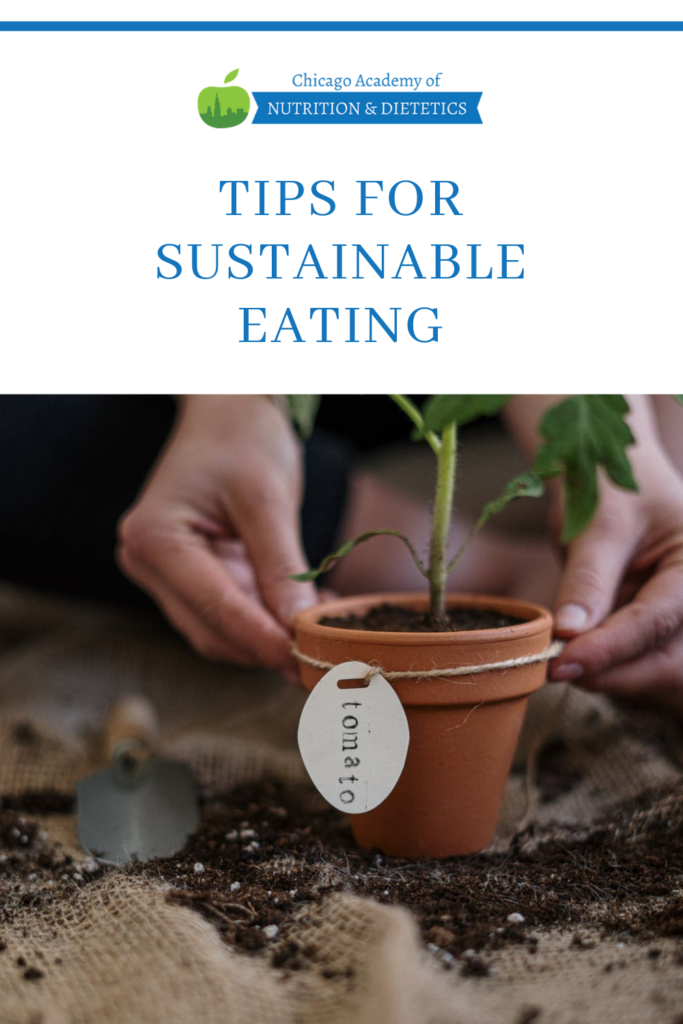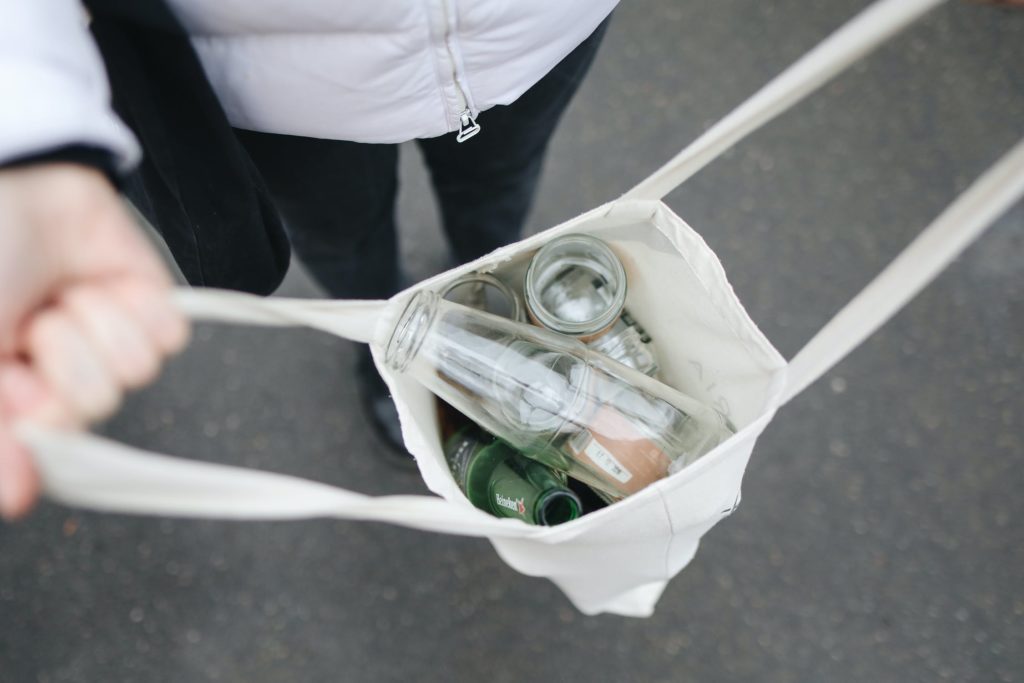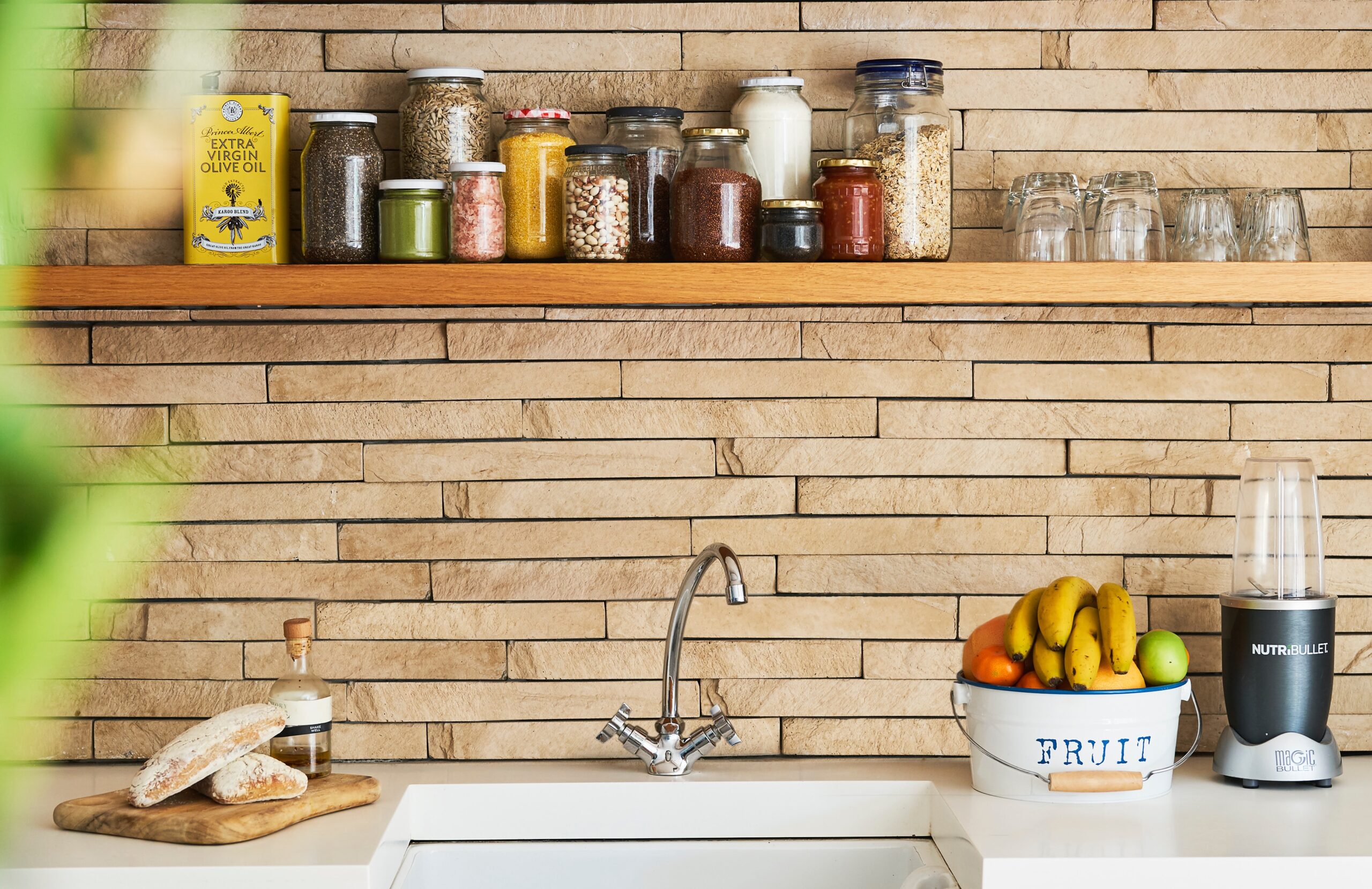5 Tips for Sustainable Eating
5 Tips for Sustainable Eating
Sustainable eating is about choosing foods that are good for you, the farmers, the environment, the economy, and society. Sustainable eating also takes into account all the consequences of agriculture and food in the environment, such as water usage and soil fertility. When considering the long lasting effects of sustainability, it becomes clear that the seemingly simple task of purchasing a tomato has more impact than what meets the eye.
Sustainable Agriculture
A sustainable process is one that can be maintained in future generations. Sustainable Agriculture is the ability to meet the needs of people for food while not jeopardizing the needs of future generations. When addressing sustainability, it is important to consider agriculture since it causes 10% of the United States greenhouse gas emissions1. Agriculture also heavily impacts natural resources and socioeconomic resources, such as fair employment.2
Before the Industrial Revolution, our agriculture system was sustainable, but not scalable to meet the needs of our growing population. Then, farmers used traditional farming methods which included using the sun for energy, rainwater, and animal manure for fertilizer. As our population grew, so did our demand for food. During this transition, small, family-owned farms shifted to large, monocrop farms, or farms that only grew a single crop, most notably, corn, soy, and wheat3. These shifts have brought consequences to the sustainability of farming. Monocrop farming, for example, is more efficient but requires more energy from fossil fuels and fertilizers. To achieve sustainability, it is important to consider the balance between energy in and energy out, as well as considering social and economic impact of these practices.
Tips for Sustainable Eating
Fortunately, there are many ways to embrace sustainable eating. When considering how you can practice sustainable eating, consider which behaviors would fit with your lifestyle as they should be sustainable for you, too!
1. Buy local
Buying local is an excellent way to support sustainable eating. This is because local food systems often use more sustainable practices, such as using less fertilizer and planting a variety of crops which improves soil quality and reduces pests4.
You may hear the argument that buying local reduces “food miles”, or the amount of distance a food item travels from farm to fork. Buying local does reduce food miles, however, gas emissions may be relatively similar among local and larger farms due to the efficiency of larger transportation trucks5. Nonetheless, there are many other benefits for buying local, for example: stimulating the local economy and supporting the community.
Buying local may look like shopping at a farmers market or purchasing a community supported agriculture (CSA) box from a local farm. When shopping at a farmers market, make sure to bring your own bags and cash, as some vendors do not accept credit cards. You can also find grocery stores or cooperative markets (co-ops) that sell local produce and grocery items.
2. Reduce Food Waste
The USDA estimates 30-40% of food is wasted in the United States, which is equal to 133 billion pounds and $161 billion worth of food annually6. Food waste can happen throughout the journey from farm to fork. As consumers, we waste food by buying or cooking more than we need. To support sustainable eating habits, try reducing your food waste.
To reduce food waste, plan meals ahead and make a grocery list to prevent purchasing too much food and bring life to leftovers! Leftovers can easily be repurposed to other delicious uses, for example leftover meat and vegetables can be reused to make new omelets or soups.
If you still end up with food waste, try composting. Composting has many environmental benefits which include reducing methane production and increasing the moisture of soil7. Finished compost can also be used as fertilizer. To start, try composting yourself or find a compost program in your community.
3. Eat more plants – vegetables, legumes and whole grains
The more whole plants we eat, the better for our health and the environment. Here are some of the reasons why eating more plants can be more sustainable:
- Less Water Use – Plants need less water to grow than animals. Per gram, beef requires 15.4 liters (L) of water compared to the .32 L for vegetables. This is because raising animals requires water for the crops to feed the animals, the pastures for the animals to graze, and drinking water for the animals to drink8. If consuming meat, you can encourage more sustainable practices, including using less water, by purchasing meat from local farms.
- PRO TIP: To get enough protein while eating more plants, choose pulses, such as beans, lentils, legumes, which provide about 7-9 grams of protein per every half cup. An added benefit of eating pulses is that, per gram of protein, pulses require much less water than nuts, chicken, or beef8
- Lower Gas Emission: Per ton of protein consumed, plants require less than 200 tons of carbon dioxide, whereas beef requires 2500 tons9. A more sustainable way of helping limit gas emission required for meat production is to eat meat sparingly, while plants should be enjoyed at every meal. Joining the new growing trend of “meatless Mondays” can be a fun way to start.
- Less Land Usage – Plants take up less space than animals9 (potatoes don’t need to graze!). This frees up space to plant more crops and feed more of our growing population. In fact, plants produce almost 2 billion pounds of food annually versus 300 million pounds of animal-based foods10.
4. Bid Adieu to Plastic
When supporting sustainable eating, take a look at your food packaging (hint – there is a lot of plastic!). In 2018, 35,680 tons of plastics were produced, and 27,000 tons ended up in a landfill (18.5 percent of all solid waste landfilled)11. Unfortunately, most foods at the grocery store use plastic packaging. To combat this, purchase loose fruits and vegetables that are not packaged in plastic. Reusable produce bags are also a great option.
For nonperishable foods, such as cans of beans or boxes of pasta, choose larger quantities to get more out of the packaging, and make sure to recycle what you can. If you’re looking to forego packaging, try visiting a cooperative market (co-op). Most co-ops allow you to bring and fill your own containers with bulk grains, legumes, and pastas as long as you weigh your container first – but make sure to get the go-ahead from an employee.
5. Don’t Purchase Bottled Beverages
When making sustainable food choices, try to skip the beverage isle. Purchasing bottled beverages are not a sustainable option because:
- Packaging is not reusable – Aluminum cans and glass bottles can only be used once before recycling, and plastic bottles are generally not reused more than a handful of times. And, only 8% of plastic and 17% of aluminum is recycled annually11.
- Transportation is inefficient – Shipping beverages across the country or globe increases gas emissions from planes, ships, and trucks. If you have access to a safe water supply, the most sustainable option is to drink water from the tap.
If you are fond of carbonation, you may want to try a sparkling water maker. You can also flavor water using fruits, vegetables, and herbs, such as cucumber, strawberry and mint.
Sustainability Is Possible
Sustainability starts with us. We have the power to make decisions that benefit our health, environment, and community. When deciding which behaviors to adopt, consider what makes sense with your lifestyle. Another way to support sustainability efforts is to vote in every election for leaders that support your sustainability goals and advocate for more sustainable practices in your community.
Sustainable eating is possible – so put your best fork forward!
References
- Inventory of U.S. Greenhouse Gas Emissions and Sinks: 1990-2018. 2020. https://www.epa.gov/sites/production/files/2020-04/documents/us-ghg-inventory-2020-main-text.pdf.
- Soper R. Hohttps://www.epa.gov/sites/production/files/2020-04/documents/us-ghg-inventory-2020-main-text.pdw wage structure and crop size negatively impact farmworker livelihoods in monocrop organic production: interviews with strawberry harvesters in California. Agric Human Values. 2020. doi:10.1007/s10460-019-09989-0
- Sabaté J, Soret S. Sustainability of plant-based diets: Back to the future. In: American Journal of Clinical Nutrition. ; 2014. doi:10.3945/ajcn.113.071522
- Feenstra G. What is Sustainable Agriculture? UC Sustainable Agriculture Research and Education Program. https://sarep.ucdavis.edu/sustainable-ag.
- Leavens M. Do food miles really matter? Harvard University. https://green.harvard.edu/news/do-food-miles-really-matter
- Food Waste FAQs. U.S. Department of Agriculture. https://www.usda.gov/foodwaste/faqs.
- Composting At Home. US Environmental Protection Agency. https://www.epa.gov/recycle/composting-home
- Chapagain a K, Hoekstra a Y. The green, blue and grey water footprint of farm animals and animal products. Unesco. 2010.
- Ranganathan J, Vennard D, Waite R, Dumas P, Lipinski B, Searchinger T. Shifting diets for a sustainable food future. Create a Sustain Food Future 2016.
- Sigler J, Videle J, Perry C, Gray A. Animal-Based Agriculture Vs. Plant-Based Agriculture. A Multi-Product Data Comparison.; 2017. https://humaneherald.files.wordpress.com/2017/12/animal-vs-plant-based-agriculture.pdf.
- Advancing Sustainable Materials Management: 2018 Fact Sheet. US Environ Prot Agency. 2020.
CAND Instagram
Recent Posts
Meet the Author
Bringing you the best nutrition information...
Our Academy Bloggers
CAND has several professional and student bloggers. They write about a range of topics for the public.






